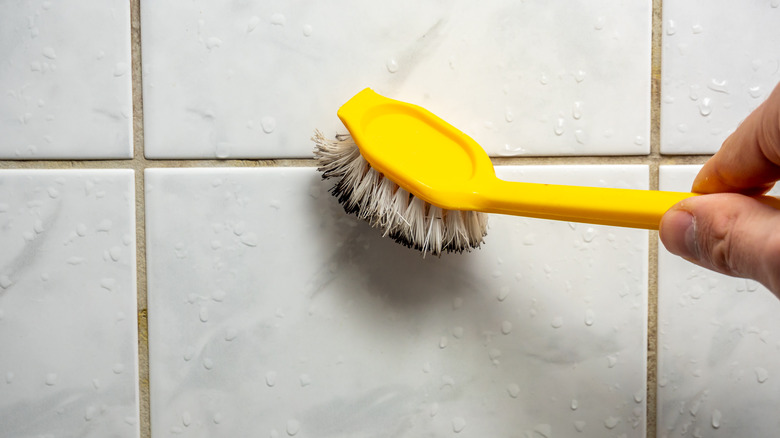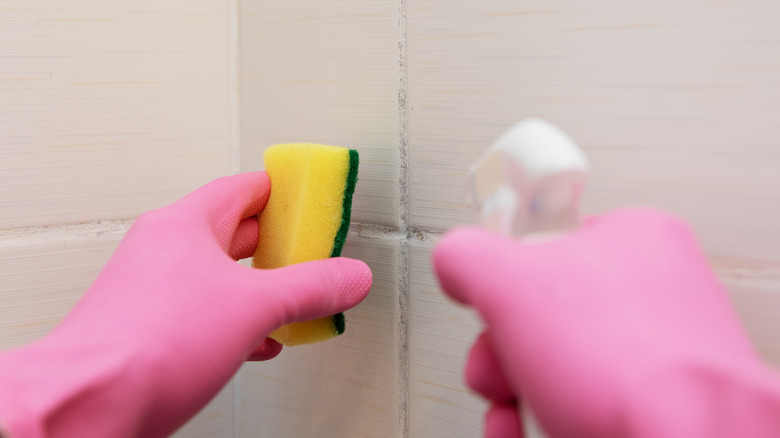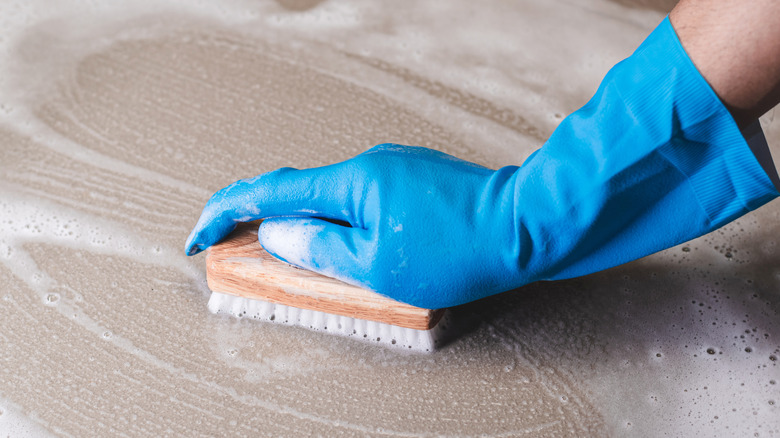How To Successfully Clean Grout Haze
A few days after installing new tile or re-grouting, you may notice a scummy glaze clouding your grout and tiles. Worried you've made a huge mistake and ordered the wrong tiles, or that an inappropriate type of grout or sealant was used? Go ahead and take a deep breath because what you're most likely dealing with is grout haze, which is essentially grout excess that wasn't totally cleaned up during the installation process, says The Grout Medic. This is fairly common — even professionals can have difficulty spotting it because water makes the haze invisible, but after drying and curing, you'll be able to see a cloudy, dull film cover your grout and tile.
While your first instinct may be to reach for industrial-strength grout haze remover and hope to obliterate the residue, hold off on that urge. Scrubbing with harsh grout haze solutions can damage your tile, and the grout you actually want to keep. Plus, before you make any decisions about how to remove the leftover grout, you need to determine what type of grout was used and how long it has been since the grout was installed.
Removing grout haze
The moment you notice grout haze is the moment you should start trying to remove it, regardless of the type of grout, tile, or how long ago it was installed. Otherwise, the cloudy residue will become harder to clean off over time. As with most things, the best way to combat grout haze is prevention. Even if you've had a professional come to install tile or re-grout your bathroom or kitchen, go ahead and give the tile surface a scrub down with some warm water and a gentle scouring pad, says Klium. But even if you didn't notice the haze for a day or two, there's no need to panic.
Try the hot water method first, and if you still notice a haze after drying, Klium recommends stepping it up a notch and mixing a 1:1 water-vinegar solution. The vinegar will work to break down the lime residue that grout is made of. Usually, this will adequately remove the grout haze, and it's an economical choice. But if this fails, it may be time to bring out the heavy-duty cleaners.
How to safely use a grout haze remover
Don't just reach for the first bottle of grout haze remover you see at the hardware store. Tile Warehouse notes that there is not a one size fits all solution for tile haze, so you need to take time to determine the chemical makeup and textural finish of the grout you've used, whether that's concrete, epoxy, sanded, or unsanded. Once you've found the appropriate haze remover, be sure to follow the label's instructions and safety to a T. That includes how to dilute the solution with water, what sort of scouring pad or brush to use, and any Personal Protective Equipment (PPE) you'll need. This can include using gloves and a mask and keeping the solution away from exposed skin.
Depending on how long the grout haze has been set in, you may need to try applying the solution a few times. Try to remember that almost everything can be cleaned if you put enough muscle into it, so don't lose hope!


